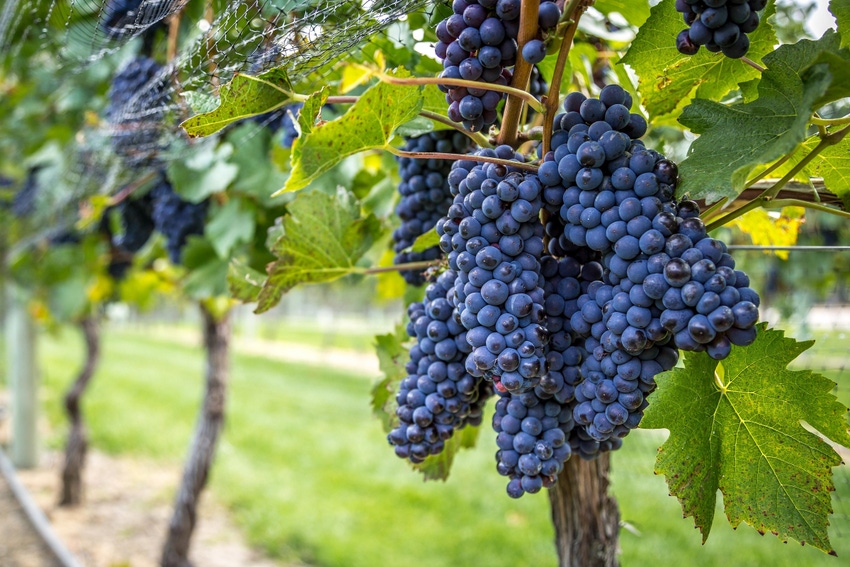
Following his mid-August assessment of his 180 acres of wine grapes near Ukiah, Calif., Greg Nelson leaves no doubt how he feels the season has progressed as the harvest nears.
“It’s a much better season all around,” says the life-long Mendocino County grower. “We’re not fighting the drought, and the crop looks better than it has the last several years. The vines really liked the above-average winter rainfall, and now they’re really flush. I’m happy with the size of the crop – not too big, but not too small, either.”
He expects to get a better indication of his 2017 production prospects later in the month. That’s when he planned to weigh clusters from three or four vines of his earliest-maturing variety, Pinot Noir, and extrapolate those figures to the entire block. He repeats this process for each variety once they’ve finished coloring up.
Nelson, whose father purchased the farm in 1952, heads the family operation. One son, Tyler, manages the vineyards using fish-friendly, organic and sustainable practices. The other, Chris, makes the grapes into wine, bottled under their Nelson Family Vineyards label.
When his father purchased the ranch, it was producing pears, prunes, sheep and red, Carignan, and white, French Columbard, wine grapes.
Then, in the late 1960s, Greg and his two sons decided to expand their vineyard operation. “We were inspired by the idea of what we could do with our grapes and a little imagination,” Greg says.
Initially, they planted Cabernet Sauvignon, Pinot Grigio and Zinfandel. Since then, they’ve expanded to include Chardonnay, Merlot, Orange Muscat, Pinot Noir, Riesling and Viognier.
The Nelsons’ diversified farming business also includes 30 acres of Bartlett pear trees; some olives trees which provide olive oil for sale in their winery’s tasting room and four acres of Christmas trees
Veraison began in their vineyards about a week later than usual this year. The Pinot Noir started to color July 15th. By mid-August the Pinot Noir had completed veraison, while the Cabernet Sauvignon, the latest to begin softening, was expected to reach full colored by the last full week of August.
As elsewhere in California’s wine county, the Nelsons’ vineyards have experienced unusually hot weather this season. It started in the last part of May, when temperatures peaked at 110 degrees. In late July, another heat spell brought temperatures as high as 106 to 108 degrees to the area.
“We didn’t see any adverse effects from the heat, but we did irrigate a lot during that time,” Greg says.
Based on reports earlier in the season about the powdery mildew pressures in wine growing areas farther south in the state, the Nelsons prepared for a possible increased threat of the fungal disease in their vineyards.
“Powdery mildew is always something you have to stay on top of to control it,” Greg says. “So, we were watching carefully for any outbreaks. We saw a little bit more than usual. We made some extra sprays and were able to prevent any significant problems.”
Meanwhile, insecticide treatments kept leafhoppers and mites under control.
Greg is encouraged that the strengthened market for wine grapes in his region will continue, at least for a while.
USDA National Agricultural Statistics Service reports that average returns per ton to Mendocino County growers last year for white wine grapes included $1,259 for Chardonnay, $1,499 for Pinot Grigio and $1,749 for Orange Muscat. For red wine grapes, average returns included $2,058 for Cabernet Sauvignon, $2,920 for Pinot Noir and $1,598 for Zinfandel.
“The wine grape market has been nice for the last four years and we’ve been able to sell everything,” Greg says. “It seems to be real solid this year, too. In fact, for the first time in several years, some wineries here are starting to offer planting contracts.
“Right now, all our grapes are sold, except for 12 tons of Viognier. It that fruit doesn’t sell, we’ll crush it for the bulk wine market, which is also strong now.”
About the Author(s)
You May Also Like




